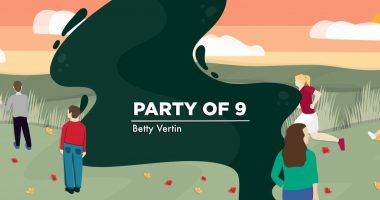Pet project: Service animals for Duchenne muscular dystrophy
Last updated June 5, 2024, by Susie Strachan
Trained service animals go beyond offering invaluable assistance and emotional support for people with Duchene muscular dystrophy (DMD). These canine companions also can help support independence.
A DMD service animal can be professionally trained or be trained by their owner. When properly registered, service dogs are allowed into public places where most pet dogs are not, including flying in the cabin on most airlines.
What are service animals?
The Americans with Disabilities Act (ADA) defines a service dog as being trained to do specific actions to help a person with a disability participate more fully in daily life.
For a child or young adult living with DMD –– the most common type of muscular dystrophy –– this may mean the service dog is trained to assist with daily tasks; mobility, such as using a wheelchair; and other issues related to balance problems.
It’s important to note that a service dog is more than a companion. While they are a valued part of your family, they have a job to do. When their assistance is needed, the dog is expected to maintain its focus on working, whether at home, school, or any other place.
The dog’s handler — it may be the person it is assisting or their caregivers — is responsible for guiding the dog through their tasks, supervising their behavior, looking after their daily care and ensuring well-being. This establishes mutual trust and makes for great teamwork.
Successful service animals for people with DMD should:
- put their handler’s interests first
- be unfazed by distractions, including other animals, traffic, or other people
- consistently perform their designated tasks, such as opening doors or picking up fallen items.
A registered service dog has full public access rights, according to the ADA. This means they can go into restaurants and stores, and are permitted to live with their handler in apartment buildings and other housing that may not normally allow pets.
Service dogs can go on all forms of public transportation, including airplanes. When planning to fly with your service dog, always check with the specific airline, as each has its own rules and regulations for service animals. Regardless of its size, your dog may be required to sit on the floor at your feet. In some cases, people purchase a separate seat for their dog.
If you are flying internationally, your service dog may need to be quarantined. It’s important to research importation requirements and any necessary documentation or procedures for your destination before booking your tickets.
Emotional support animals
An emotional support animal (ESA) provides companionship and also may help boost mental health by helping with anxiety reduction.
Unlike a service animal, an ESA isn’t trained to do a specific task for a person with a disability. Instead, they provide therapeutic support to their owner.
ESAs can be any species of animal, including dogs, cats, rabbits, birds, or even miniature horses. The animal should be trained to be well behaved in public situations.
You can obtain a letter or prescription from a licensed mental health professional to certify that your animal provides therapeutic support as an ESA. The letter may help in certain situations where animals are not usually allowed.
For example, the Fair Housing Act in the U.S. allows you to keep your ESA in housing that normally doesn’t allow pets. However, as of 2021, an ESA is treated as a regular pet by airlines and may be required to fly as cargo.
How can service animals help people with DMD?
Having a service dog can help you in a number of different ways, providing you with physical and emotional support, alerting you to potential dangers, and increasing your overall independence.
DMD is characterized by muscle weakness and other symptoms that get progressively worse with age and cause mobility challenges such as difficulty climbing stairs and an increased risk of falls. Many people with DMD need to use a wheelchair by their teenage years.
Some of the ways trained assistance dogs can help you include:
- standing up from a seated position
- walking or going up stairs
- picking up items
- bringing your medication.
Service dogs also may be able to open doors or cabinets, fetch things you can’t reach, carry items for you, and push elevator buttons.
Some service dogs may be able to alert you to potential dangers or emergencies, such as avoiding potential falls or medical crises.
For example, a dog may be trained to alert your caregiver to signs of distress such as changes in breathing patterns, muscle weakness, or loss of consciousness. They may be trained to activate or retrieve medical alert bracelets or buttons, or your cellphone, to help you notify your caregivers or medical responders.
Particularly for children living with DMD, service dogs can act as social icebreakers, fostering connections with others, as well as serving as a wonderful companion.

Are service animals professionally trained?
In the U.S., there are both professionally trained and home-trained service dogs. Professional training organizations train dogs to perform skills specifically needed by their handler.
A service dog is trained to behave appropriately and unobtrusively in public spaces, such as restaurants, stores, public transportation, and healthcare facilities. The trainers ensure the dog knows how to sit quietly by their handler in public and not react to distractions, including other dogs.
Registered service dogs are not required by the ADA to wear a vest, harness, collar, or other visible identification of their working status while in public.
You may choose to put these on your service dog to prevent it from being approached or distracted by other people, and to help with getting access to businesses and other public places where people may not be familiar with the laws regarding service animals.
Finding a service animal
If interested in a service animal, look for training organizations that:
- select puppies carefully for certain traits and put in 1,500 hours or more of specialized training and socialization
- find pet homes for the dogs that don’t make the final list
- match the dog to your specific needs, including your family and environment
- train you and your family in how to interact with your new dog and provide remedial training as needed.
Assistance Dogs International (ADI) is a worldwide coalition of not-for-profit programs that train and place service dogs, including those in North America. The ADI sets standards for training and evaluates whether its members are meeting those standards.
There are also for-profit organizations that train service dogs. The cost may be higher and usually includes the dog as well as training you in how to handle your new canine and follow-up training as needed to maintain the dog’s service abilities.
In the U.S., health insurance coverage varies when it comes to the cost of obtaining, training, or maintaining a service dog. Contact your health insurance company to learn more.
There are organizations that can offer financial assistance or scholarships for people who cannot afford a service dog. Some charities offer grants or can help you with raising the funds to afford a DMD service dog.
Many ADI-accredited member programs are able to offer their assistance dogs at minimal or no cost thanks to the support of donors and grant funders. They also may be able to help you raise funds to cover the costs of application fees, training services, travel, or other expenses.
Once you have a service dog, you may want to look into buying life insurance for your canine to cover the financial impact of losing an indispensable working dog that plays a critical role in your daily life.
Choosing your service animal
Selecting the right service dog involves careful consideration of your needs, preferences, and lifestyle.
Start by looking at the size and strength of various dog breeds. If you need help getting your wheelchair up ramps and getting items from high locations, a large heritage breed dog such as a golden or Labrador retriever might be a good fit.
If you feel you would struggle to control a larger dog, a smaller breed such as a miniature schnauzer, miniature poodle, or Havanese could be a better match.
Mixed breed dogs also can be service animals, depending on their temperament and willingness to be trained to work.
Next, consider the dog’s activity levels, temperament, and intelligence.
- You may prefer a dog that’s content with moderate exercise, or you may want one that can go with you on outdoor adventures.
- Temperament — the dog’s general mood, sociability, and compatibility with other pets or family members — plays a big part in keeping harmony in your working relationship.
- Intelligence is a measure on how quickly the dog understands your commands and can think for themselves in situations where you may not be paying proper attention, such as when crossing a street in heavy traffic or are in a medical crisis.
If you or anyone in your family has allergies, you may want to put a hypoallergenic service dog breed on your wishlist.
Some people are allergic to the proteins found in canine saliva and dander. While no breed of dog is truly hypoallergenic, certain types may be less likely to cause allergic reactions.
Can a pet become a service animal?
If you already have a family dog, you might be wondering if your canine friend can be trained to become your service dog.
The answer is qualified by certain conditions.
Service dogs can be any breed or a mix; however, there are municipalities that prohibit specific breeds of dogs. These places must make an exception for a service animal of a prohibited breed, unless the dog poses a direct threat to the health or safety of the public.
Your dog must have a temperament that makes them:
- unflappable in any situation, including riding in an ambulance and not reacting in crowds
- alert but not reactive
- highly trainable with a willingness to please
- able to focus intensely on each task-based exercise
- reliable in performing repetitive tasks.
Service dog training is a specialized process that typically takes two years, encompassing not only task training but also extensive socialization to ensure unwavering focus and composure in any environment.
The ADI lists member training programs that will train your dog to become a service dog, which will require anywhere from six months to two years to meet the standards for a well-trained service animal.
The standards include keeping your dog under control at all times so they can accompany you to school and other public places.
However, the ADA does not require you to use a professional training service to train your own dog.
Finally, you are required to register your service dog. This can be done for free with organizations such as Service Dog Registration.
Muscular Dystrophy News Today is strictly a news and information website about the disease. It does not provide medical advice, diagnosis, or treatment. This content is not intended to be a substitute for professional medical advice, diagnosis, or treatment. Always seek the advice of your physician or other qualified health provider with any questions you may have regarding a medical condition. Never disregard professional medical advice or delay in seeking it because of something you have read on this website.
Recent Posts
- Myotonic dystrophy drug SRP-1003 trial advances to higher doses
- I’m conflicted about the idea of a cure for muscular dystrophy
- I went from lifting 150 pounds to carrying the weight of Duchenne
- Does DMD start in the womb? New research challenges old beliefs.
- Finding meaning at 30 through my disease communities
Related articles







